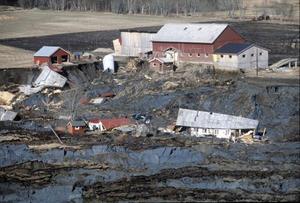Quicksand is the loose, water-logged sand which yields easily to weight or pressure, and it is the most dangerous clayey sediment that may liquefy during an earthquake. When the 9.0 earthquake and tsunami hit Japan on March 11, 2011; we just see how vulnerable is the whole distribution system in the country and worldwide. And just like those buildings built on the quicksand are destroyed in an instant during the natural hazard.
The estimated death toll from Japan’s disasters climbed past 10,000 Sunday as government raced to combat the threat of multiple nuclear reactor meltdowns. For Japan, one of the world’s leading economies with ultramodern infrastructure, the disasters plunged ordinary life into nearly unimaginable deprivation. Hundreds of thousands of hungry survivors huddled in darkened emergency centers that were cut off from rescuers, aid and electricity. Million households had gone without water and food since the quake struck.
In Tokyo, one of the most busy and efficient city in the world, people are desperately seeking for iodine, rice, bread, batteries, flashlights, candles, and gasoline. Almost every supermarkets and convenient stores are being emptied by the residents in Tokyo.

It may be several weeks or months before the full impact of the tsunami in Japan, from an economic or supply chain perspective, is understood. As the world’s third largest economy, the images of cars and houses being swept along by powerful waves signal that there is widespread damage. The closure of airports and ports could have significant consequences.
However, Apple already feels the shock of the Japan’s earthquake because 30 percent of its flash memories come from Japan, and now they have no choice but turns to Samsung, Korea. Also, the price of electronic appliances and cars are believed to increase in a few weeks.
I think effective supply chain management is a critical component of any company’s ability to meet consumer demand. Disruptions to the supply chain disturb the normal flow of goods and materials and, as a consequence, expose firms to operational and financial risks. Companies should back up their supply chain with insurance and more advanced supply chain management system. Also, companies should take natural disasters into account and ask themselves if they are prepared for the worst!



0 responses so far ↓
There are no comments yet...Kick things off by filling out the form below.
Leave a Comment